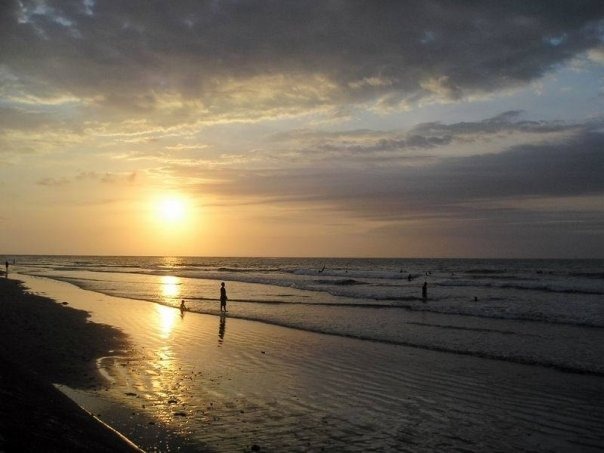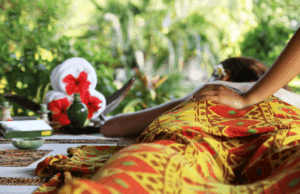In the enchanting landscape of Ubud, the cultural heart of Bali, the practice of traditional Balinese rituals intertwines seamlessly with the serene experience of spa treatments. As visitors immerse themselves in the island’s lush scenery and rich heritage, a poignant question arises: how can these ancient rituals be revitalized to enhance modern spa experiences while preserving their authenticity? This exploration endeavors to unravel the delicate balance between tradition and contemporary wellness practices, posing a challenge for both spa practitioners and seekers of holistic rejuvenation.
To appreciate the depth of Balinese rituals, it is essential to understand their historical and cultural significance. Rooted in Hindu belief systems, these rituals embody elements of spirituality, community, and healing. Traditionally, they serve as conduits for connecting with the divine and fostering harmony between individuals and their surroundings. In the context of a spa, integrating these time-honored practices offers patrons not merely relaxation but a profound connection to the island’s spiritual ethos.
The first step in reviving traditional Balinese rituals within the spa environment is to curate authentic experiences that resonate with the cultural significance of each practice. Practitioners must delve into the array of rituals, such as ritual purification, offerings, and ceremonies, to unveil the underlying intentions behind these actions. An example is the “Melukat,” a purification ceremony often performed at sacred springs or temples. While traditionally executed with the guidance of a priest, it can be thoughtfully adapted into a spa journey, where practitioners can guide guests through symbolic purification, employing water, herbs, and sacred chants to evoke a sense of cleansing and renewal.
Moreover, the incorporation of local ingredients into spa treatments draws from the abundance of Bali’s flora and fauna. Traditional Balinese healing customs rely heavily on the healing properties of natural elements. Utilizing ingredients such as lemongrass, coconut oil, and pandan leaves not only pays homage to the island’s cultural heritage but also enhances the authenticity of the spa experience. How can modern therapists therefore authentically incorporate these healing elements to provide an immersive sensory experience? The answer lies in continuous education and the practice of sustainable sourcing methods, ensuring that these natural offerings remain intertwined with both the rituals and their environment.
Emphasizing the role of music and sound in Balinese rituals also adds depth to spa experiences. Traditional music played during ceremonies serves not only to create an ambiance but also to instill a sense of tranquility and belonging. By integrating elements of gamelan music or the gentle sounds of nature into spa treatments, practitioners can transport guests to a state of profound relaxation. Traditional chanting by skilled practitioners could further enhance the experience, promoting mindfulness and spiritual connection. Yet, how can one strike the right chord between sacred and serene in this juxtaposition of sound?
Having established the framework for integrating traditional practices, the challenge lies in ensuring that these experiences resonate with a global audience. Today’s wellness seekers come with diverse backgrounds and varying definitions of tranquility. Thus, how can spas in Ubud cater to an international clientele while maintaining an authentic Balinese essence? Customizing experiences without stripping away cultural significance will require a deep understanding of guest expectations, astute intercultural sensitivity, and a commitment to authenticity. This approach allows for the adaptation of rituals in ways that feel both meaningful and accessible to all.
Furthermore, the impact of teaching these rituals cannot be understated. Empowering local practitioners to become ambassadors of their culture not only stimulates the local economy but also ensures that the younger generation appreciates their heritage. Workshops that teach both locals and visitors about traditional practices can foster an enriching environment where respect for cultural traditions flourishes. These festive gatherings could transform common spa sessions into communal celebrations of wellness and unity, bridging the gap between the ancient and the present.
As one delves deeper into the tactile experiences at spas influenced by Balinese rituals, sensory engagement becomes paramount. Creating an atmosphere that stimulates not just the physical body but also the mind and spirit requires acumen in design and ambiance. Aromatherapy, visual art, and tactile furnishings should harmonize with the spa’s overarching theme. Scents of jasmine and frangipani, the sight of lush greenery, and the feel of warm stones can evoke various emotional responses, ultimately leading to a more profound experience linked to the island’s spiritual practices.
Yet, within this revival lies the greatest responsibility: the ethical engagement with tradition. Respect for the customs and belief systems that underpinned these rituals is crucial. Misappropriation or commercial exploitation of Balinese culture poses salient risks. It necessitates vigilant mindfulness among those presenting these traditions in a spa context. Authentic storytelling and community involvement in crafting spa narratives can aid in mitigating such risks, ensuring that the rituals are celebrated rather than commodified.
In conclusion, the revival of traditional Balinese rituals in the realm of spa treatments in Ubud presents both opportunities and challenges. The quest for a harmonious blend of tradition and modernity necessitates an unwavering commitment to cultural authenticity, education, and sustainable practices. As individuals seek to rejuvenate their bodies, minds, and souls, the call to honor the sacred traditions of the past becomes ever more urgent. So, how will you partake in this vibrant tapestry of rejuvenation? The journey awaits, resonating with the whispers of ancient wisdom that lie at your fingertips.





Leave a Comment